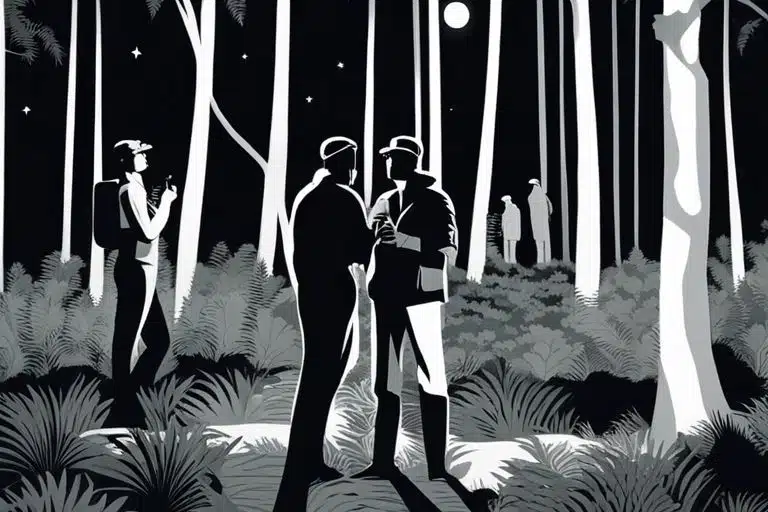Embark on a magical journey into the world of nighttime birding with BirdistRule29’s comprehensive guide in partnership with Audubon. While many birders typically rise at dawn to catch the early birds, there’s a whole different avian experience awaiting you after dark. From elusive owl species to the enchanting calls of nocturnal birds, exploring the night’s mysteries can be incredibly rewarding for nocturnal birders. With tips on recording calls, identifying nighttime migrants, and even launching on a Big Night birding adventure, this guide is your gateway to a whole new realm of birdwatching.
Key Takeaways:
- Explore Nighttime Birding: Discover the magic of birding after dark, a unique experience where you can listen for nocturnal species like owls and nightjars.
- Identify Nocturnal Birds: Learn about different species of nocturnal birds, such as owls, nightjars, and other birds that are more active during the night.
- Engage in Night Flights: Consider exploring night flight calls, where birds migrate and communicate overhead at night, offering a fascinating aspect of birdwatching.

Preparing for Your Nighttime Bird-Watching Adventure
Essential Gear for Nocturnal Birding
Some of the imperative gear you’ll need for nocturnal birding includes a reliable flashlight, a comfortable set of binoculars, and a field guide to help with species identification. Additionally, consider bringing along a notebook and pen to jot down your observations, as well as a good quality recording device to capture the bird sounds you hear.
Safety Tips for Birding at Night with Audubon
You should always bird in groups of two or more for safety. Before heading out, let someone know your plans and expected return time. Wear appropriate clothing and footwear, and carry a fully charged cell phone. Assume that you may encounter wildlife or rough terrain, so it’s important to stay aware of your surroundings at all times.
Step-by-Step Guide to Finding and Identifying Nocturnal Birds
| Step | Description |
| 1 | Research the types of nocturnal birds in your area. |
| 2 | Learn the unique calls and behaviors of these birds. |
| 3 | Head out after dark equipped with a flashlight, birding guide, and binoculars. |
| 4 | Listen carefully for distinct nocturnal bird calls. |
| 5 | Record sightings and sounds for later identification. |
Types of Nocturnal Birds You Might Encounter
Birds that you may encounter during nocturnal birding include owls, nightjars, whippoorwills, nighthawks, and more. Owls are known for their hooting calls, while nightjars have unique fluttering flight patterns and loud calls. Recognizing these species by sound and behavior is crucial in identifying them during nighttime bird-watching.
Techniques for Locating Owls and Nightjars
Nocturnal birding requires specific techniques for locating owls and nightjars. You can use tools like a flashlight and portable microphone to enhance your night vision and record bird sounds. By focusing on the unique calls and behaviors of these species, you can improve your chances of spotting them in their natural habitat. Establishing a quiet and patient approach is crucial when monitoring nocturnal birds, as they tend to be more elusive during nighttime hours.
The Science of Bird Calls and Nighttime Behaviors
Deciphering Owl Hoots and Nightjar Chants
To understand the nocturnal behaviors of owls and nightjars, it is vital to tune into their unique calls. As an aspiring nocturnal birder, listening to the distinct hoots of owls and the enchanting chants of nightjars can lead you to exciting discoveries in the dark. To start interpreting these mysterious calls, familiarize yourself with the common owl calls using resources like Audubon and Xeno-canto. Head out to wooded areas where owls are known to frequent, especially during the fall and winter breeding seasons, to hear their calls echoing through the night. You may even get a response when you mimic their hoots, creating a magical connection with these elusive creatures.
Factors Influencing Nocturnal Bird Activities
Nocturnal bird activities are influenced by various factors that shape their behaviors under the cloak of night. From the habitat they inhabit to the presence of predators and prey, nocturnal birds navigate their nighttime world with precision and stealth. Factors such as moonlight intensity, temperature, and seasonal changes can also impact the activity levels of nocturnal species, affecting their vocalizations and movement patterns. By understanding these influences, birders can enhance their nocturnal birding experiences and gain deeper insights into the lives of these elusive creatures. Perceiving the interconnectedness of these factors is crucial for successful nocturnal birdwatching ventures.
Pros and Cons of Nocturnal Birding
| Pros | Cons |
| Experience unique bird species like owls and nightjars. | Limited visibility at night can make bird identification challenging. |
| Less competition for birdwatching spots. | Risk of getting lost or encountering dangerous situations in the dark. |
| Opportunity to experience the peacefulness of nighttime. | Nocturnal birding requires specialized equipment like night vision goggles. |
| Enhances birdwatching skills by focusing on auditory cues. | Difficulty in recording bird calls accurately due to ambient nighttime sounds. |
The Rewards of Nighttime Bird-Watching
Some birders find the rewards of nighttime bird-watching to be truly magical. The thrill of hearing elusive owl calls echoing through the night or encountering the haunting songs of nightjars can create unforgettable experiences. It offers a unique opportunity to observe nocturnal bird species in their natural habitat and develop a deeper connection to the nocturnal world of birds.
Challenges and Considerations for Nocturnal Birders
Even with its rewards, nocturnal birding comes with its own set of challenges and considerations. The darkness and limited visibility can make bird identification more challenging, requiring birders to rely more on auditory cues than visual observations. Additionally, there may be safety concerns when navigating through unfamiliar nighttime environments.
One major consideration is the use of specialized equipment like night vision goggles or high-quality recording devices to capture nighttime bird calls accurately. It’s important for nocturnal birders to be well-prepared for their excursions and take necessary precautions for their safety.
Audubon Bird Guide – Apps on Google Play

Final Words
With these considerations in mind, it’s clear that nocturnal birding offers a unique and thrilling opportunity for bird enthusiasts to explore the world of nighttime bird songs and calls. From the mysterious hoots of owls to the enchanting melodies of nightjars, there is a whole new world of bird species to discover after dark. Whether you’re a beginner birder looking to expand your birdwatching horizons or a seasoned pro seeking a new challenge, exploring the world of nocturnal birds can be a rewarding and unforgettable experience. So grab your flashlight, listen for those calls in the darkness, and launch on a nighttime birding adventure that will truly broaden your birding horizons.
FAQ
Q: What is nocturnal birding?
A: Nocturnal birding, also known as birding at night, is the practice of observing and listening to bird species during the nighttime hours. This type of birding allows you to experience a different set of bird species that are active at night and appreciate the unique sounds and behaviors of nocturnal birds.
Q: How can I start birding at night?
A: To start birding at night, you can begin by familiarizing yourself with the common nocturnal bird species in your area and their distinct calls. Tools like Audubon’s guide to nighttime bird sounds and resources like Xeno-canto can help you learn the calls of owls, nightjars, and other nocturnal birds.
Q: What are some tips for a successful night birding experience?
A: When venturing out for night birding, make sure to bring important equipment such as a flashlight, binoculars, and a field guide. It’s important to practice safety precautions and let someone know your whereabouts. Additionally, consider joining a birding group or online community to share your experiences and learn from seasoned nocturnal birders.
As a bird enthusiast with a passion for sharing the wonders of our feathered friends. As a writer and nature lover, I'm thrilled to connect with fellow bird buffs and inspire others to take flight into the fascinating world of birds. Let's wing it together!


